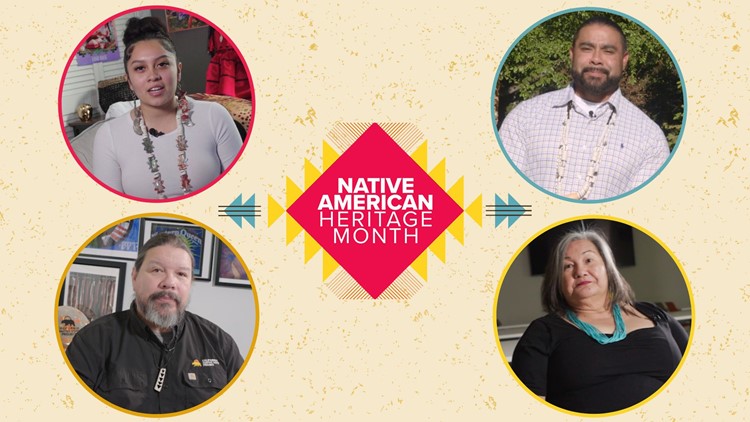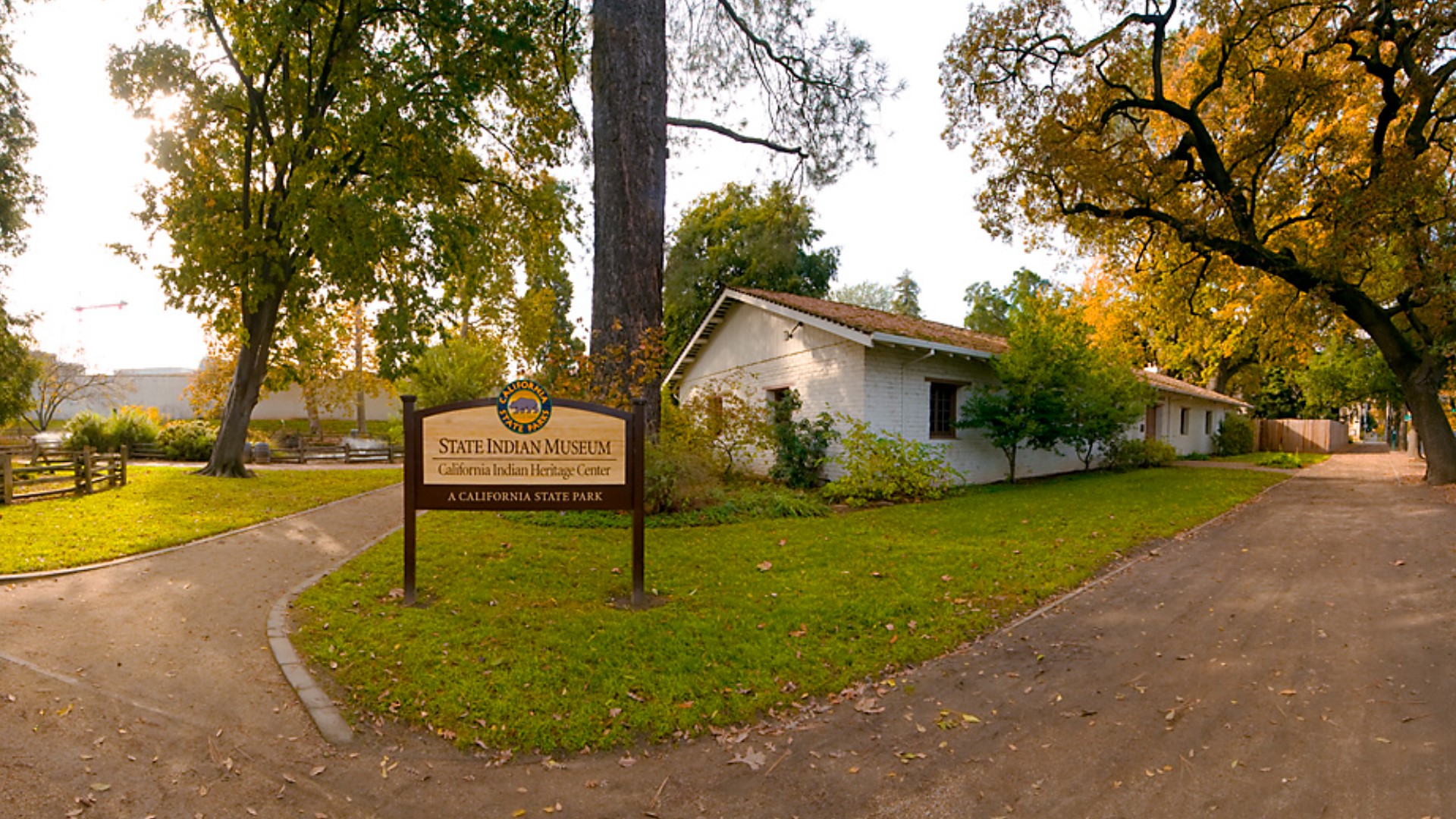SACRAMENTO, Calif. — November is dedicated to celebrating and acknowledging the traditions, contributions and stories of Native Americans. Before there was Native American Heritage Month, also known as National American Indian and Alaska Native Heritage Month, Dr. Arthur C. Parker, a Seneca Indian, pushed for the Boy Scouts of America to have American Indian Day to recognize the First Americans.
In 1915, the annual Congress of the American Indian Association formally approved a plan for American Indian Day and its president, Rev. Sherman Coolidge, issued a nationwide proclamation on Sept. 28, 1915 to declare the second Saturday of each May as American Indian Day.
In 1990, President George H. W. Bush approved a joint resolution designating November as National American Indian Heritage Month. The proclamation has been issued every year since 1994.
Nearly 9.7 million people identify as Native American and Alaska Native, according to 2020 U.S. Census data. In its data release, the U.S. Census Bureau presented numbers for nearly 1,500 detailed race and ethnic groups, including 1,187 detailed American Indian and Alaska Native (AI/AN) tribes and villages, further outlining the rich diversity of Native American people.
In California, 3.6% of the population identifies as American Indian and Alaska Native alone or in combination, which is more than 1.4 million people.
ABC10 sat down with four people who shared what it means to be Native American.
GET MORE RACE & CULTURE FROM ABC10:
►Explore the Race & Culture home page
►Watch Race & Culture videos on YouTube
►Subscribe to the Race and Culture newsletter
Angelina Hinojosa
Angelina Hinojosa is a member of Pinoleville Pomo Nation, a tribe with roots in Potter Valley that, through forced displacement, new diseases and servitude by European colonizers, settled on the north side of Ukiah, California, which became known as Pinoleville.
The Pinoleville Rancheria was terminated in 1966 by the federal government, but regained its federal recognition in 1983 as a result of the Tillie Hardwick v. U.S. class action case. In 2006, Pinoleville Pomo Nation was recognized as a self-governance tribe and is now one of 10 independent sovereign tribes in Mendocino County, each with their own constitution and tribal laws.
Traditionally and culturally, Hinojosa said Pomo people are known for basket making. Today, those stitches and practices continue to be passed down to new generations. Hinojosa said many of their baskets now sit in CSU campus collections, which they want back. In 2001, the California State Legislature passed AB 978, the California Native American Graves Protection and Reparations Act (California NAGPRA), to require state agencies and museums that have collections of Native American human remains or cultural items to provide a process for repatriation of those items to the appropriate tribes. This was following the initial federal NAGPRA law enacted in 1990 to return human remains and cultural items. A state audit released back in June 2023 concluded that of the 21 CSU campuses with NAGPRA collections, more than half have not started the process.
Hinojosa said Native people are diverse, unlike harmful stereotypes that perceive Native people as looking all the same.
"As Pomo people, we would all say we're Pomo, but there are so many different types of Pomo. I'm Northern Pomo, but you have Southern Pomo, you have Central Pomo," Hinojosa said. "A lot of people within our communities are very racially mixed, too. We have afro-Natives, we have Natives who are mixed with Mexican descent, and so we all look different but we know where we come from."
During Native American Heritage Month and every day, Hinojosa recognizes those who are fighting for important issues impacting Native communities, such as Missing and Murdered Indigenous Women (MMIW), water rights, landback, food sovereignty and salmon restoration. She also honors culture bearers who continue to carry traditional knowledge for future generations.
Jesus Tarango
Jesus Tarango is the chairman of Wilton Rancheria, the only federally recognized tribe in Sacramento County. As the youngest appointed chairman of Wilton who started in Wilton's Tribal Council, Tarango said he looks up to his mother Chairwoman Emeritus Mary Tarango, who was pivotal in helping reinstate the tribe's federal recognition in 2009 after Wilton Rancheria was terminated in 1959 by the federal government. Today, Wilton Rancheria continues to provide educational, healthcare and housing programs, as well as employment opportunities.
Tarango grew up with strong ties to his culture — he and his siblings learned traditional dances and songs from his mother from the moment he could walk. His mother was a dancer for William "Bill" Franklin, a Miwok leader who was instrumental in preserving Miwok dances and traditions and helped build roundhouses in California for Native people to hold gatherings and ceremonies.
As a tribal leader, Tarango said one of the biggest issues he recognizes in Indian Country is the Missing and Murdered Indigenous People (MMIP) crisis. In 2016, there were 5,712 reports of missing American Indian and Alaska Native (AI/AN) women and girls, according to the National Crime Information Center. The Center for Disease Control and Prevention reported murder as the third-leading cause of death among AI/AN women and the Urban Indian Health Institute released a 2018 report detailing rates of violence among AI/AN women living in urban areas, identifying 506 unique cases of missing and murdered AI/AN women and girls across 71 selected cities.
As part of a diverse California, which is home to 109 federally recognized tribes and dozens of others seeking federal recognition, Tarango said Wilton Rancheria is as unique and different as every other tribe.
"My people, when we were terminated... our land was taken from us. Some tribes here in California, they're still in their original homeland, maybe they're in a rural country. For my people, we're here in the city, and I would say that the significance, the uniqueness of Wilton Rancheria, is that we're just one of 109. And if you really want to get to know us, you have to really get to know us," he said.
Alexanderia Russell
Alexanderia Russell is a White Mountain Apache and an Elder in Sacramento's Native American community. As an Elder, Russell said she prioritizes sharing and passing down culture and traditions, while also breaking mental health stigmas in Native communities. Her focus comes from her own experiences — growing up as a child in Sacramento, Russell said she didn't have a safe space. Today, she continues to promote mental and physical wellness at various organizations and agencies, including at the Sacramento Native American Health Center.
For more than 30 years, she and her husband Larry Russell have been teaching their gift and medicine of Southwest pottery as one way to promote that wellness.
"It's also therapy for a lot of people. When you're touching the clay, it's also feeling the earth. We talk about where it comes from, the gathering," Russell said. "Since we're taking the clay from the river, we have to give it back. So we also teach our youth and families that when you're working with the clay and you're thinking about presenting it as a gift, you want to have that good energy."
Russell said her pottery classes are also a way to engage with youth and make sure they have models and mentors growing up.
"We all have a role in the community, from children, youth, adulthood and elders... I want to make sure that my grandchildren are around models and mentors. And now, I see these youth leaders that grew up as children, that was in my classes or in the circle with me, and now they are coming to me and let me know, if I need anything, that they are there, that they're only a call way," she said.
For Russell, her work is far from over. She hopes to continue to inspire the future generations so they can continue to find themselves in positions of leadership.
Calvin Hedrick
Calvin Hedrick is Mountain Maidu and a community organizer with the California Native Vote Project (CNVP) in Sacramento, a statewide effort to build political power and civic engagement within Native American communities to achieve justice and self-determination. He's also worked extensively with Native youth and communities in Northern California as the founder of The 5th Direction, a program to promote cultural strength and revitalization for youth.
As an organizer, Hedrick places importance on reshaping the public school curriculum on Native American history, which he said is often inaccurate. He's now working with youth to develop campaigns in school districts to push for truthful teachings on history, such as topics like the California mission system, which forced Native people to convert to Christianity and assimilate into European colonial society, leading to the enslavement and genocide of Indigenous people.
Hedrick also hopes to bring more community awareness around the importance of long hair for Native boys and men. He said many have been misgendered because of their long hair, including his own son. The importance of long hair goes back to the dark past of Native American boarding schools. Between 1869 and the 1960s, hundreds of thousands of Native American children were forcibly removed from their families and placed in boarding schools run by the federal government and churches. Children were stripped of their cultures — punished for speaking their Native language and for practicing their traditions.
"Their hair was cut... They were taught to just assimilate into greater society," Hedrick said. "It's so powerful to have a young person who's like 7 or 10 or 12 or 15 who comes and says, 'I grow my hair long for my ancestors, for my grandparents, who couldn't, who weren't allowed to."
For Hedrick, Native American Heritage Month is an opportunity to look up to influential Native American figures and heroes. Hedrick said his personal hero is Billy Mills, an athlete, and member of the Ogala Sioux tribe, who is the USA's one and only gold medalist in the men's 10,000-meter run. He claimed his victory during the 1964 Tokyo Olympics in what is still regarded as one of the greatest Olympic upsets.
We want to hear from you!
The Race and Culture team's mission is to serve our diverse communities through authentic representation, community engagement and equitable reporting.
Accomplishing our goals of inclusive reporting requires hearing from you. Is there a person or place that you want us to highlight? Email us at raceandculture@abc10.com or fill out the form below.



